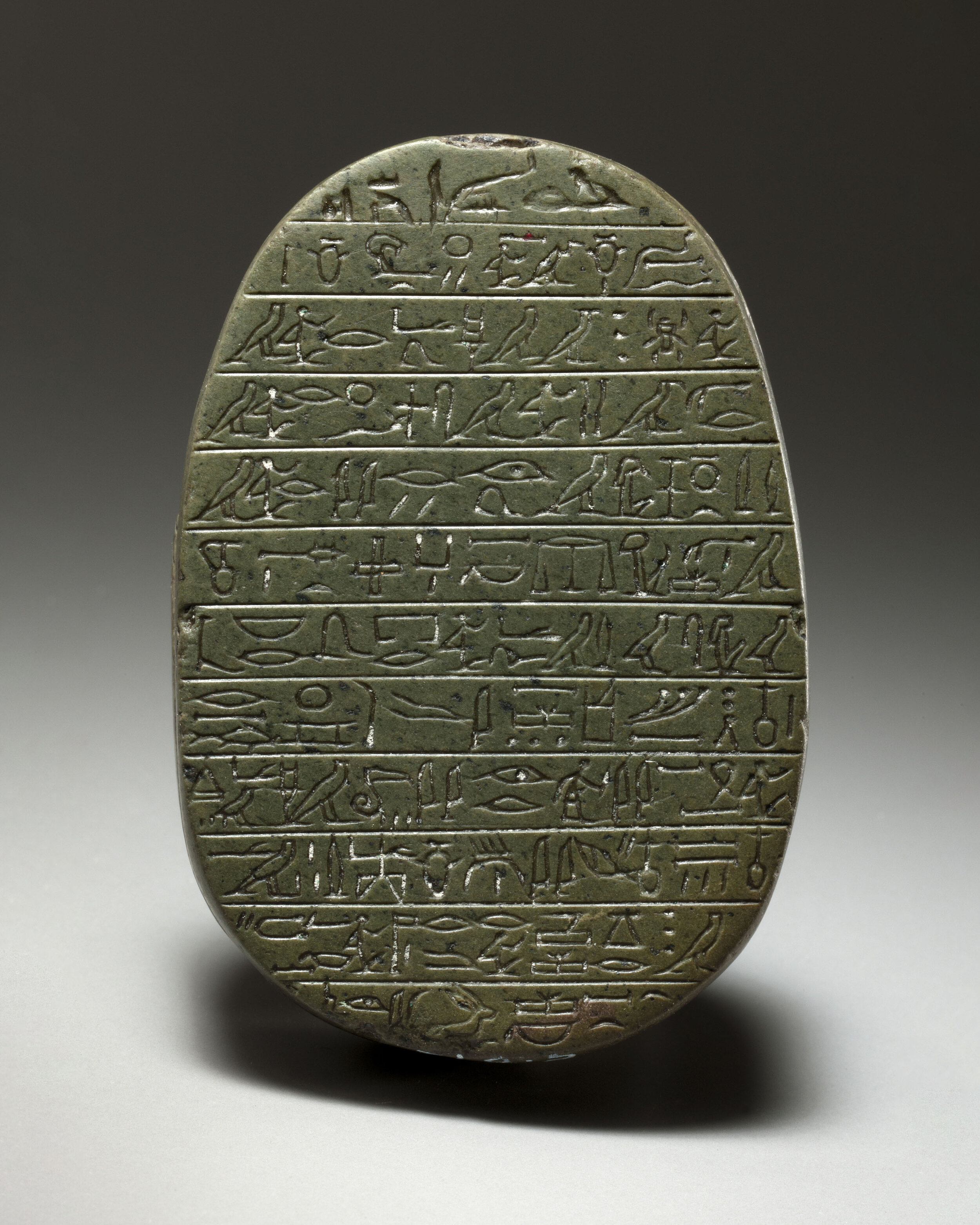Ancient Egyptian Faience Statuette-Amulet of Thoth with the Head of an Ibis
Ancient Egyptian Faience Statuette-Amulet of Thoth with the Head of an Ibis
Egyptian, Late Period or Ptolemaic Period (6th–1st century B.C.)
Light green faience
H: 11.6 cm
Serial: 19698
The statuette is in good condition, but the beak has been reconstructed. The surface of the faience still partially retains its original turquoise green color and matte/satin appearance, but it is also covered with a slight beige layer due to the storage conditions at the site. The feet are placed on a rectangular, rather thick pedestal, while a vertical pillar that reaches to shoulder height reinforces the back of the statuette. The sculptor did not hollow out the space between the legs. The two cylinders placed at ear level were pierced vertically for suspension from a cord, which strongly suggests that this figurine was intended to serve as an amulet.
Despite the absence of specific attributes, the statuette can be identified confidently as a representation of Thoth in his human form with the head of an ibis. The god appears as a young man in the prime of life, standing upright in a hieratic pose: the arms, attached to the body, hang down at his sides along the hips and thighs, the left leg strides forward, the head is straight. Thoth is entirely nude, but he wears a striped tripartite wig, which falls on the shoulders and on the upper back. The human face is completely replaced by the head of the ibis, with the long curved beak and the neck provided with long horizontal lines that suggest the esophagus of the bird. The image turns almost grotesque, despite its natural position and remarkable artistic qualities. The precise, finely modeled and almost soft shapes of chest, abdomen, and thighs require a date for this statuette in the 1st millennium B.C.—and more precisely, in the Late Period (or even the Ptolemaic period). A lunar deity depicted as a baboon or an ibis, Thoth was worshiped primarily at Hermopolis. His skills were unique, since he was charged with all intellectual activity. He was the master of writing, thought, and language, but also the god who counted, handled numbers, calculated time, and regulated the calendar. For this reason, he coordinated the distribution of the offerings between the various gods. A sort of divine secretary, Thoth was responsible for counting the sins of the deceased when they arrived in the afterlife, in front of Osiris. His qualities made him a great magician and healer.
In addition, as the inventor of writing, Thoth was considered the master and patron of scribes, especially in his cynocephalic form. Amulets depicting the god with a human body and an ibis head appeared during the New Kingdom (an example made of gold was placed around the neck of the mummy of Tutankhamun). They remained very popular throughout the first millennium B.C., with an obvious funerary connotation.
PROVENANCE
Ex-M. H. Hoff mann collection, France; M. Delestre auction sales, Paris, May 14, 1895; ex-Charles Gillot (1853-1903) collection, France, acquired in 1895 in Paris.
BIBLIOGRAPHY
ANDREWS, C., Amulets of Ancient Egypt (London, 1994), pp. 27, 49. CAUBET, A. (ed.), Faïences de l’antiquité. De l’Égypte à l’Iran (Paris, 2005), pp. 142–43, no. 390. FRIEDMAN, F. D. (ed.), Gifts of the Nile: Ancient Egyptian Faience, exh. cat., Museum of Art, Rhode Island School of Design, Providence (London,1998), p. 258, no. 188; p. 231, no. 130. SCHOSKE, S., and D. Wildung, Gott und Götter im Alten Ägypten (Mainz am Rhine, 1992), pp. 173–74, no. 116.








